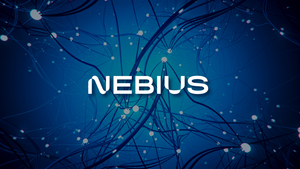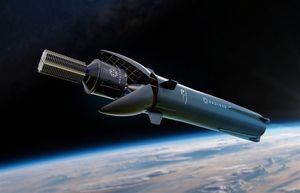According to Nick Mitchell, Media Solutions Consultant with InterDigital and active contributor to the Advanced HDR by Technicolor initiative—a collaboration involving InterDigital and Philips—the disconnect stems from the industry's reliance on static lookup tables (LUTs) to manage HDR-to-SDR conversion workflows. While this approach offers predictable results, it also limits the dynamic qualities that define HDR, potentially undermining the value of premium viewing tiers.
"Right now, many broadcasters are playing it safe," said Mitchell. "They're limiting the range of HDR content to ensure consistent SDR output, but in doing so, they're sacrificing the very qualities that make HDR feel like a premium experience."
Pressure to Preserve Brand Integrity Leads to Compromise
One of the major drivers behind this cautious approach is brand protection. Advertisers and sponsors invest heavily in ensuring that visual brand elements—such as the exact shade of Coca-Cola red, sports team logos or national flags—appear consistently across all viewing formats. To meet these expectations, content producers often constrain HDR parameters to avoid unexpected deviations during SDR conversion, even if that means flattening the HDR experience.
"Static lookup tables are predictable and reliable, which makes them feel safe," said Mitchell. "But when you clamp down on the HDR range to guarantee that SDR conversion works as expected, you end up with a final product where HDR and SDR look surprisingly similar. That sameness is becoming noticeable—even to trained professionals."
Mitchell recalled a recent interaction with a broadcast facility operator who questioned whether there was a problem with incoming transmissions because the HDR and SDR versions of a major sports broadcast looked virtually identical. Such feedback raises concerns about the perceived value of HDR content, especially as more services introduce tiered pricing models that charge a premium for access to HDR-enhanced streams.
Toward a More Dynamic, Intelligent Workflow
Mitchell and his colleagues at Advanced HDR by Technicolor are advocating for a shift away from static workflows toward a more dynamic, frame-by-frame conversion process powered by machine learning and real-time analytics. These technologies, Mitchell said, can preserve the integrity of both HDR and SDR signals without forcing compromises in creative intent.
"Advanced HDR by Technicolor uses machine learning to analyze each frame and determine the best conversion path," he explained. "That allows content creators to focus on delivering the best possible HDR version without constantly second-guessing how it will look in SDR. The system handles the conversion dynamically, ensuring quality on both ends."
One of the key innovations in the Advanced HDR by Technicolor system is its ability to deliver a single-stream format—known as SL-HDR—that carries both HDR and SDR information. This eliminates the need for dual-stream delivery, simplifying infrastructure and reducing bandwidth demands. It's a particularly attractive feature for over-the-air broadcasters operating within the ATSC 3.0 specification, where spectrum efficiency is critical.
The Business Case for Differentiation
As streaming platforms and content providers vie for viewer attention in a crowded marketplace, the ability to deliver a truly differentiated visual experience becomes more important. Mitchell believes that HDR, when properly implemented, can offer a compelling point of distinction—not just for viewers but also for advertisers looking to maximize the impact of their brand messaging.
"Any advertiser wants their product to stand out," he said. "High dynamic range allows for greater visual impact—brighter highlights, deeper shadows, more vivid colors. That can make a commercial more memorable and effective. But right now, many sponsors haven't experienced the full potential of HDR because the content they're supporting is still being constrained by static workflows."
Mitchell sees an opportunity for advertisers to become more engaged in the production process, advocating for dynamic HDR workflows that enhance—not inhibit—the delivery of brand visuals. "We need to start bringing sponsors into the conversation," he said. "They have a stake in how their products are perceived, and HDR—done right—can be a huge asset for them."
Preparing for an HDR-First Future
Currently, SDR remains the dominant viewing format, but industry observers agree that the tipping point is approaching. As more consumers upgrade to HDR-capable displays and expect premium content to take full advantage of those capabilities, the pressure to treat HDR as the "hero" version will increase.
"When that flip happens—when HDR is being viewed more often than SDR—the current strategy won't hold," Mitchell warned. "At some point, we'll have to decide which version we optimize for. If we want HDR to stand out, we have to start preparing for that shift now."
The transition will likely require a rethinking of priorities throughout the content pipeline, from camera shading and color grading to transmission and device compatibility. Dynamic HDR solutions like those offered by Advanced HDR by Technicolor aim to future-proof this transition by enabling flexible, scalable delivery models that adapt in real time.
Test, Validate, Evolve
Mitchell emphasized that the best way to move the industry forward is through practical experimentation. "We need to engage. We need to get into the labs and do testing," he said. "We have to prove that we can produce truly impactful HDR while still delivering a beautiful SDR experience."
Early adopters of the Advanced HDR by Technicolor workflow, he added, have already begun to validate its effectiveness. The solution has been integrated into ATSC 3.0 deployments and has demonstrated the ability to reduce bandwidth consumption while maintaining visual quality across formats. "Our customers regularly tout the benefits," Mitchell said. "The system just works."
As interest in immersive and high-fidelity media continues to grow, the demand for HDR experiences that deliver on their promise will only intensify. Mitchell's message to the industry is clear: Now is the time to embrace dynamic workflows that unlock HDR's full potential—not just for consumers, but for the entire content ecosystem.
"Let's make great images," Mitchell concluded. "That's what this is all about."
Click here to read the full Q&A with Nick Mitchell.
Click here to view the full vidcast interview.
Photos: (Click photo to enlarge)


Source: Advanced HDR by Technicolor
Read Full Story - IBC 2025: Dynamic HDR Gains Traction as Industry Seeks to Deliver on Premium Viewing Promises | More news from this source
Press release distribution by PRLog






